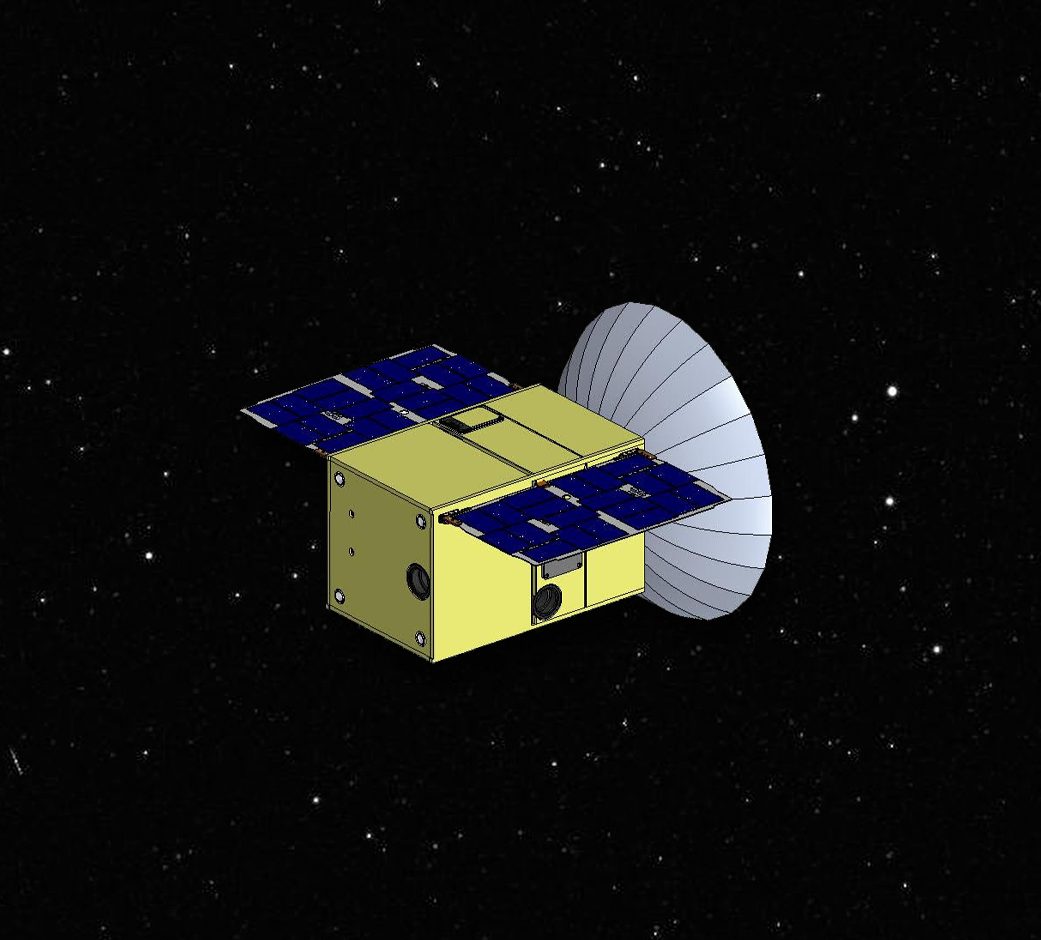Cubesat Mission Will Be First to Fly Lunar Gateway's Unusual Orbit

NASA has partnered with Advanced Space of Boulder, Colorado, to develop a cubesat satellite that will launch to the same lunar orbit targeted for the agency's Gateway outpost.
The satellite, called the Cislunar Autonomous Positioning System Technology Operations and Navigation Experiment (CAPSTONE), is scheduled to launch as early as December 2020 and will be the first spacecraft to operate in a near-rectilinear halo orbit around the moon, according to a statement from NASA.
The lunar Gateway space station will provide an orbiting base around the moon from which astronauts can descend to the lunar surface or go farther into space. It is a key element of NASA's Artemis program, which plans to land astronauts near the moon's south pole by 2024.
Related: Can NASA Really Put Astronauts on the Moon in 2024?
CAPSTONE will help pave the way for the Gateway outpost and a crewed lunar return in 2024 by demonstrating how to enter into and operate in the same unusual lunar orbit Gateway is meant to use. The satellite will also test a new navigation capability, according to the statement.
"This is an exciting opportunity for NASA to aggressively push forward towards the moon in partnership with several American small businesses as a vanguard to Artemis and sustained human presence beyond low-Earth orbit," Jim Reuter, associate administrator for NASA's Space Technology Mission Directorate, said in the statement. "This mission is highly ambitious in both cost and schedule — and taking that deliberate risk is part of the objective of this mission — alongside the rapid technological advancement in cislunar navigation and the opportunity to verify orbital trajectory assumptions and retire unknowns for future missions."
CAPSTONE will be about the size of a small microwave oven. In a rectilinear halo orbit, it will rotate together with the moon as it orbits Earth, and will pass as close as 1,000 miles and as far as 43,500 miles above the lunar surface, according to the statement.
Breaking space news, the latest updates on rocket launches, skywatching events and more!
The cubesat will also be equipped with a communications system that can determine how far CAPSTONE is from NASA's Lunar Reconnaissance Orbiter and how fast the distance between the two spacecraft changes. This inter-spacecraft information will help demonstrate how autonomous navigational software can be used to track future missions, the agency said.
"CAPSTONE offers a lot in a small package," Bradley Cheetham, CEO of Advanced Space, said in the statement. "Not only will it serve as a pathfinder for Artemis, but it will also demonstrate key exploration-enabling commercial capabilities."
The satellite could launch as early as December 2020. However, NASA is still evaluating how CAPSTONE will launch to its orbit. One possible option includes launching the cubesat as a primary payload on a small launch vehicle.
NASA anticipates that it will take approximately three months for the spacecraft to enter its target orbit, after which time it will begin a six-month primary demonstration phase to better understand the unique environment.
In a near rectilinear halo orbit, the satellite will take advantage of a precise balance point in the gravities of Earth and the moon, establishing a stability that is ideal for long-term missions like Gateway, the statement said.
"Our team will be pioneering state-of-the-art tools for mission planning and operations to enable growth in the number of future missions to the moon, Mars, and throughout the solar system," Cheetham said.
- Gateway to the Moon: NASA Testing Wraps Up for Lunar-Orbiting Habitat Prototype
- 21 Most Marvelous Moon Missions of All Time
- Thales Alenia Working With Three Companies on Deep Space Gateway Concepts
Follow Samantha Mathewson @Sam_Ashley13. Follow us on Twitter @Spacedotcom and on Facebook.

Samantha Mathewson joined Space.com as an intern in the summer of 2016. She received a B.A. in Journalism and Environmental Science at the University of New Haven, in Connecticut. Previously, her work has been published in Nature World News. When not writing or reading about science, Samantha enjoys traveling to new places and taking photos! You can follow her on Twitter @Sam_Ashley13.
